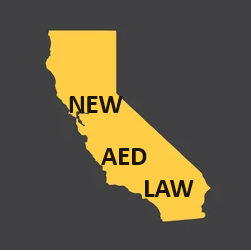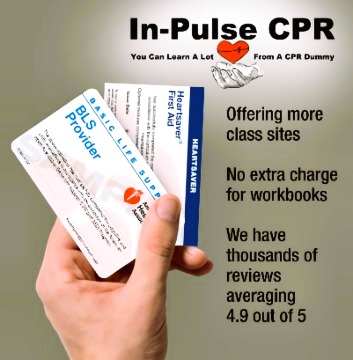The 2027 AED Legislation in California: Risky and Dangerous
Dangerous
Sudden cardiac arrest (SCA) is a leading cause of death in the United States, with nearly 356,000 out-of-hospital cases occurring each year. When it comes to saving lives, every second counts.
That’s where CPR and automated external defibrillators (AEDs) come into play. To address the issue, California has passed a law that will take effect in 2027, requiring certain buildings to have AEDs.
However, given the urgency of the situation and the substantial benefits AEDs provide, there’s a strong case for accelerating this timeline. Also, legislators might want to review some of the law’s guidelines.
Here are a few reasons why the 2027 law on AED use in California should be treated with greater immediacy and scrutiny.
To understand more about this law, let’s look at its basic mandates.
What the New California AED Legislation for 2027 Covers
A California law, beginning in 2027, requires the presence and accessibility of AEDs at events or venues used for youth sports organization activities. These organizations are defined, basically, as a group, organization, or nonprofit entity that oversees sports competitions, training programs, camps, or clubs for young people up to the age of 17.
AED Limitations
The new law in California imposes limitations on who can use these AEDs available at youth sporting events. Specifically only “medical professionals ” coaches,” or designated individuals are only allowed to use the devices.
According to the legislation, the designated users of the AEDs must hold some form of an AED endorsement. However, an AED certification technically does not exist. While you can receive CPR/AED training and certification, AED certification is not offered by itself.
An Example of What Can Happen
So, let’s say a victim falls unconscious from an SCA on the sports field. While a bystander may practice CPR in this situation, no one can operate the AED until the designated user arrives on the scene.
Moreover, if this limitation exists, it may prevent a bystander or staff member from performing CPR if they perceive only certain people can use an AED.
Why the Current Law Needs to be Reviewed and Changed
AEDs, today, come with directions – some of which provide instructions in either Spanish or English. Therefore, the rationale of the current law is confounding and could lead to the loss of a life that could have easily been saved.
It simply does not make any sense when you consider how AEDs are made to be user-friendly. Therefore, there really isn’t any reason, from a health or public standpoint, to restrict the use of an AED. Hopefully, the legislature will review this law and amend it before 2027.
Supporting Measures and Facts
Indeed, this matter should be seriously considered when you review the current facts related to performing CPR and using an AED outside a medical facility.
1. SCA can strike anyone, anytime
Cardiac arrest does not discriminate based on age, fitness levels, or previous medical history. It can happen to anyone—athletes, children, and adults alike—and at any moment. Already having access to an AED during these emergencies can significantly increase a victim’s chances of survival. Therefore, no restrictions should be placed on using the machines.
2. Rapid intervention is crucial
Brain damage can begin within just 4-6 minutes after cardiac arrest occurs, followed quickly by death if left untreated. Emergency medical services (EMS) often take much longer to arrive at the scene—averaging around 8-12 minutes. Therefore, placing an AED and limiting its use defeats the purpose of the device.
3. Unrestricted access to an AED will increase bystander intervention rates
Studies have shown that bystanders play a critical role in cardiac arrest survival rates. By allowing AEDs to be used freely, California can also bolster its overall survival rates through increased bystander intervention. Not only will people be more ready to perform CPR, they can quickly use an AED.
In Summation
Sudden cardiac arrest (SCA) claims countless lives in the US each year. Therefore, California’s 2027 AED law is dangerous legislation.
Rapid intervention is highly important during cardiac events as is the life-saving potential of AEDs. By restricting the device’s use to only certain people, bystanders and others may also refrain from performing CPR.
As a nation, we need to lead a charge about CPR training while making it easy to access and use AEDs. The new law in California needs to be reviewed and altered. Doing so will mean the difference between life and death – between a positive outcome and sadness and regret.




